
The Pros
- Sleek, compact design
- Offered at a low price while still containing many of the next-gen features offered by the Series X
- Game Pass and backwards compatibility offer a vast library of games
The Cons
- No 4K support
- Lack of next-gen games at launch
- Expanding storage is costly
Historically, new console generations have started with a single system each from PlayStation, Xbox and Nintendo.
While the former two companies began experimenting over the past few years with mid-generation upgrades in the form of the PlayStation 4 Pro and Xbox One X, respectively, none of the three major hardware manufacturers have ever come out with two next-gen consoles simultaneously — until now.
In fact, as Sony itself sticks to tradition by focusing on single hardware — the PlayStation 5, which comes in a $499 CAD digital-only model that’s otherwise exactly the same as its standard, disc drive-equipped $629 counterpart — Microsoft has opted to go with two SKUs right out of the gate: the $599 Xbox Series X and $379 Series S.
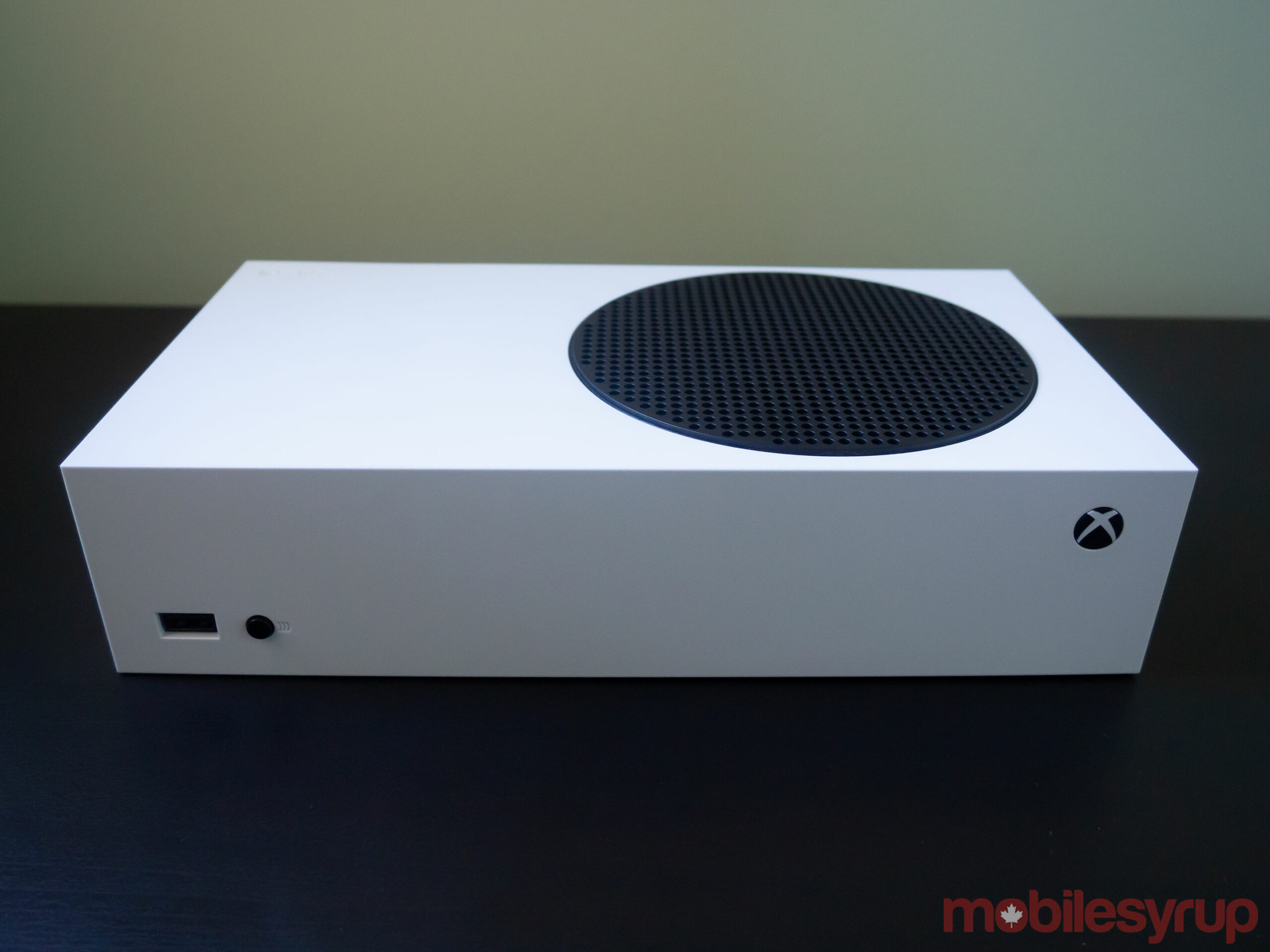
It’s a radical departure from the norm, especially given the boxes’ markedly different pricing. The reason for this is that the Series X is positioned as a true, 4K-capable box with a disc drive, effectively making it the direct successor to the Xbox One X. By contrast, the Series S is a 1440p, digital-only console; essentially, a follow-up to the Xbox One S.
That said, the Series S more than makes up for its lower resolution and lack of physical media — so much so, in fact, that it impressively manages to achieve parity in many other ways with its significantly pricier sister console. Two questions remain, then: what, exactly, are the similarities and differences between these systems, and which one should you actually get? MobileSyrup managing editor Patrick O’Rourke dives into the Series X in his own review, but here, I’ll get into the nitty-gritty of the Series S.
Impressive specs packed inside a low-cost, bite-sized box

You’d be forgiven for looking at the Xbox Series S and not believing it was actual next-gen hardware. After all, it’s downright tiny, measuring in at 6.5 cm deep (2.5-inches), 15.1 cm wide (5.9-inches) and 27.5 cm tall (10.9-inches) when in a vertical position. This makes the Series S dramatically smaller than the PC tower-like Series X [30.1cm (11.8 inches) tall, 15.1cm (5.9 inches) deep and 15.1cm (5.9 inches) wide] and egregiously bulky PS5 [39cm (15.4 inches) tall, 26cm (10.2 inches) deep and 10.4cm (4.1 inches) wide.].
Given that the PS5 is the largest console in modern history — and the Series X isn’t all that smaller — it’s refreshing that the Series S is so compact. Further, Microsoft’s made the smart choice to add rubber ‘feet’ to allow for both out-of-the-box vertical and horizontal placement — a welcome improvement over the Xbox One S’ requirement for a vertical stand. These design choices should enable the Series S to fit comfortably in most TV entertainment stands, like the inexpensive ‘Lack’ model I recently picked up from IKEA specifically with the next-gen consoles in mind.
At the same time, the Series S takes the already sublime Xbox One controller and makes small but meaningful improvements. These include deeper, more angled buttons on the D-pad for precise inputs and little grooves on the back of the controller for a smoother, more comfortable grip. (Your existing Xbox One accessories, including the standard controller, Elite controller and even the wonderful accessibility-minded Adaptive Controller, are also supported on Xbox Series S).
The Series S’ most outstanding design element, however, is its surprisingly robust specs. 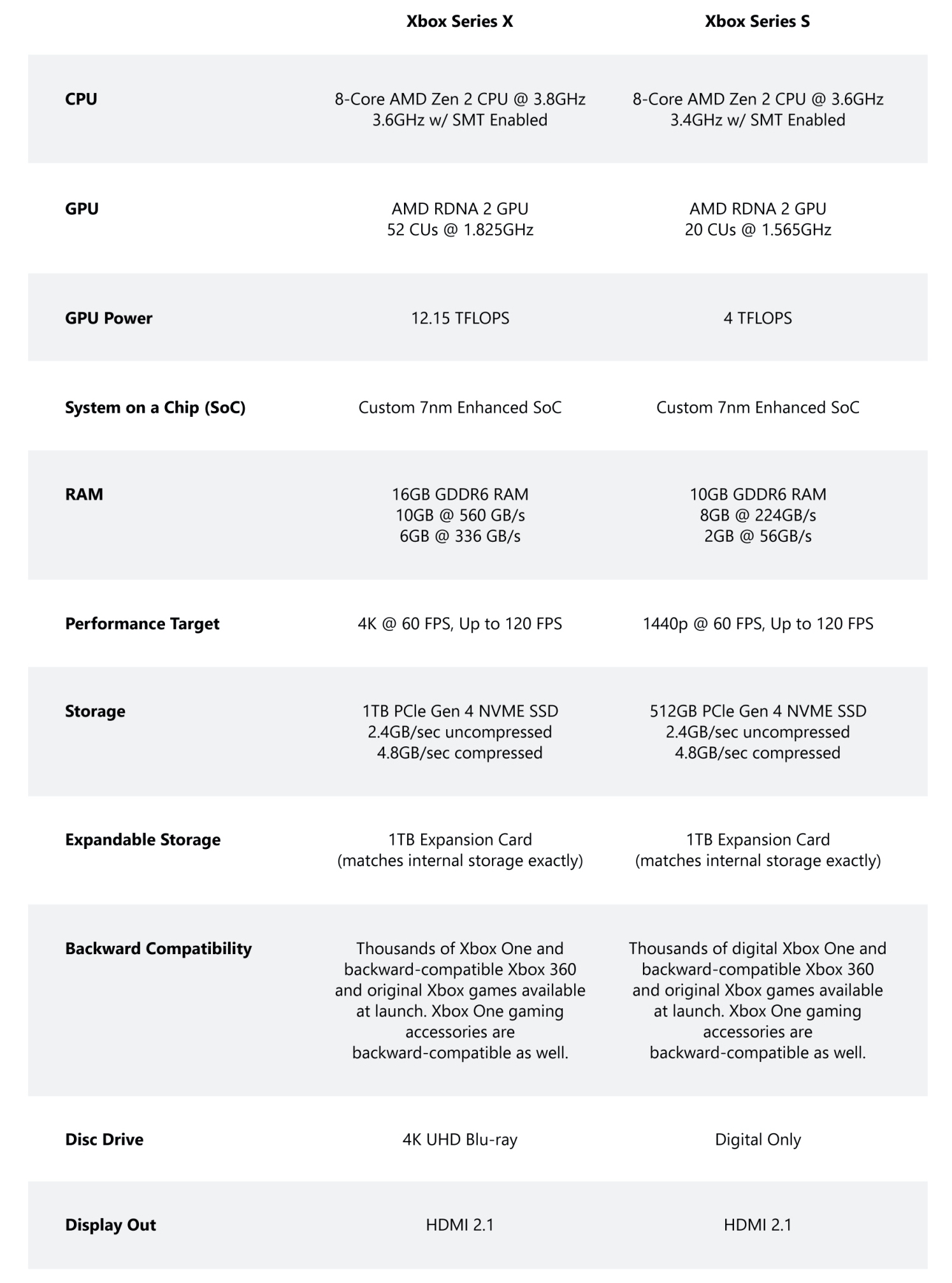
As you can see in the table above, the Series X and S boast many of the same specs outside of their differing GPU power. It’s absolutely remarkable that Microsoft was able to accomplish this while still making the Series S $220 cheaper. Ostensibly, the shared hardware allows for all of the same games to be developed for both consoles.
What’s more, the Series S and X versions of the game can even feature similar visual enhancements, including high dynamic-range (HDR) for a wide colour gamut and ray tracing for more realistic lighting effects. It should be noted, however, that some games — like Capcom’s Devil May Cry 5: Special Edition — will only enable ray tracing on Series X, so Series S support will vary depending on the publisher. Overall, the only major difference between the consoles with respect to visuals is that image quality will, of course, look crisper on the Series X due to its ability to output in 4K.
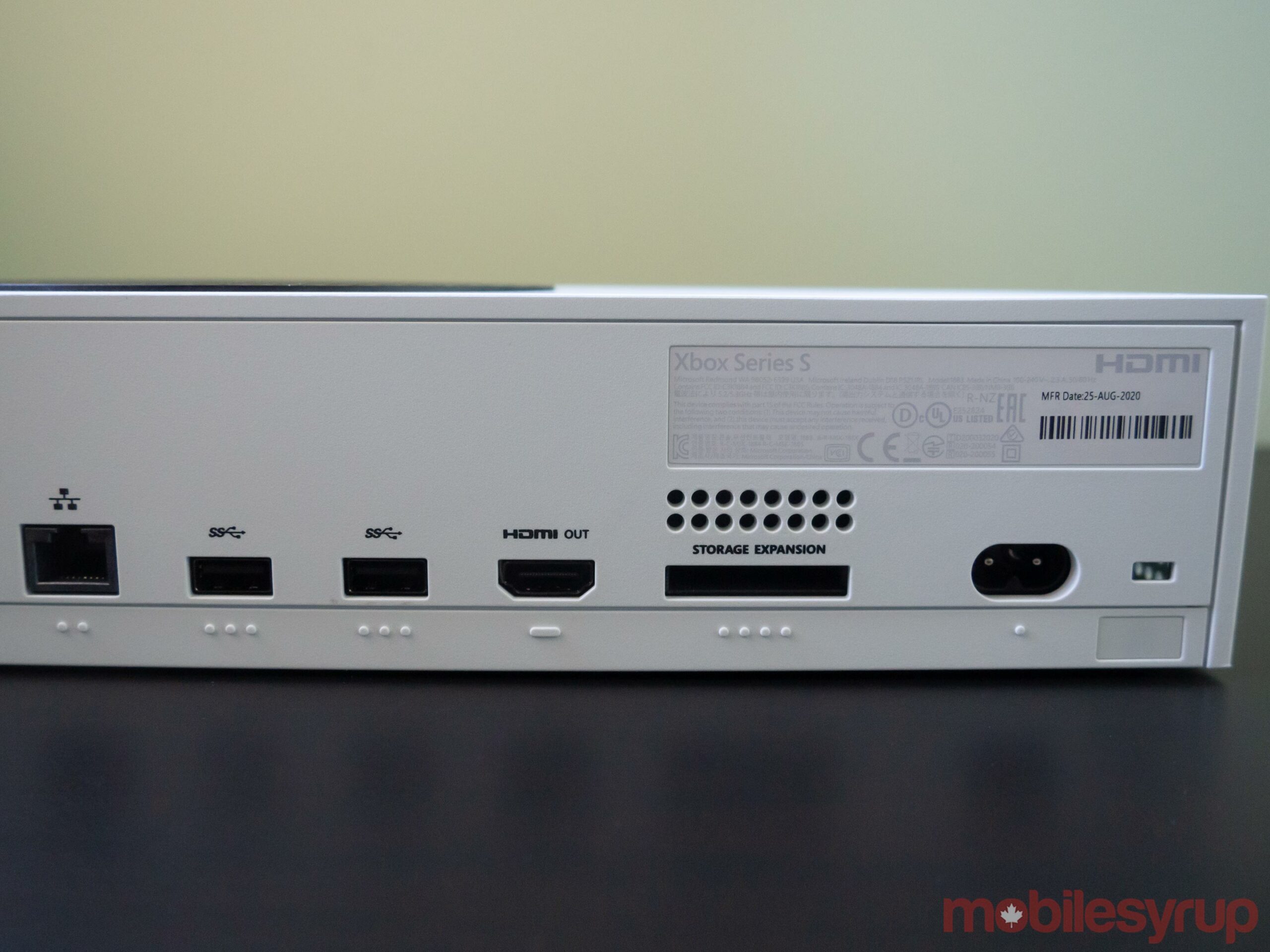
Undoubtedly, there will be many who argue that a next-gen console should support 4K gaming. It’s also important to note that in terms of raw power, even the current-gen Xbox One X has the advantage with its six teraflops to the Series S’ four. Nonetheless, a lower resolution was a necessary compromise in order to help cut costs. But even ignoring that, the reality of the market is that there are many people who still don’t even own a 4K TV. According to global research firm Statista, only about 31 percent of televisions in U.S. homes were 4K models in 2018 (Canadian 4K television data, unfortunately, isn’t available.)
To be sure, this doesn’t factor in other countries like Canada or how the U.S. numbers may have grown in the two years since, but nonetheless, it’s safe to say that there is still a large contingent of people who haven’t switched over from regular HD TVs. Therefore, the Series S’ max 1440p resolution will be more than sufficient for this not-insignificant market. The Series X and PCs remain viable options for those looking for 4K Xbox games.
“Microsoft had the choice to prioritize visuals or gameplay with the Series S, and it’s thankfully gone for the latter here”
And that’s not to say that the Series S is lacking in any next-gen tech — far from it. In lieu of adding more raw power to the Series S, Microsoft has instead opted for speed. The Series S and X have both been built with the new ‘Xbox Velocity Architecture,’ which Microsoft has described as the “soul” of its next-gen hardware. Breaking down all of the fancy marketing speak, this means that the Series X and S are both powered by a custom NVME SSD, which, along with system on a chip (SOC) technology, allows both games to run at up to 120fps on both consoles.
This is crucial, as resolution merely affects how games look; frame rate informs how they actually play. Microsoft had a choice to prioritize visuals or gameplay with the Series S’ specs, and it’s thankfully gone for the latter here. This decision was especially forward-thinking, as it ensures that likes of Halo: The Master Chief Collection and Gears 5 — as well as their inevitable new entries and other fast-paced shooters — will be buttery smooth to play on the Series S.
The other key part of the Velocity Architecture equation is that the SSD allows for rapid load times. While PC players have been enjoying the tech for years, it’s downright mind-blowing to think that Microsoft is bringing it to consoles with a box that costs only $379. If you’re someone like me who’s never dabbled in PC gaming (and, quite frankly, many console players will be in the same boat), the Series S’ SSD is a game-changer.
For example, I recently reviewed Watch Dogs: Legion on Xbox One X, which would take as much as 75 seconds to load my save file from the main menu. While testing the game on Series S, however, Legion‘s load times from the main menu were as low as 21 seconds. Meanwhile, The Witcher 3: Wild Hunt — another staggeringly large open-world game — booted up my save as quickly as 11 seconds on Series S, compared to 23 seconds on the Xbox One X. In both cases, these games still haven’t even received their promised dedicated next-gen patches, which could, in theory, reduce load times even more on top of adding visual benefits.
What’s more, Xbox chief Phil Spencer has said he’s seen some games load even faster on Series S because they don’t need to worry about 4K assets like the Series X. Spencer didn’t point to specific games, so it’s unclear exactly how many games this might apply to. For what it’s worth, I did experience much faster load times with Assassin’s Creed Odyssey, which took around 16 seconds to resume my save file on Series S compared to the Series X’s 30 seconds. Conversely, Final Fantasy XV actually took marginally longer for me on Series S (14 seconds versus the Series X’s 13). Therefore, your mileage may vary, although it’s still a surprising and noteworthy advantage in some cases.
In with the old, out with the new
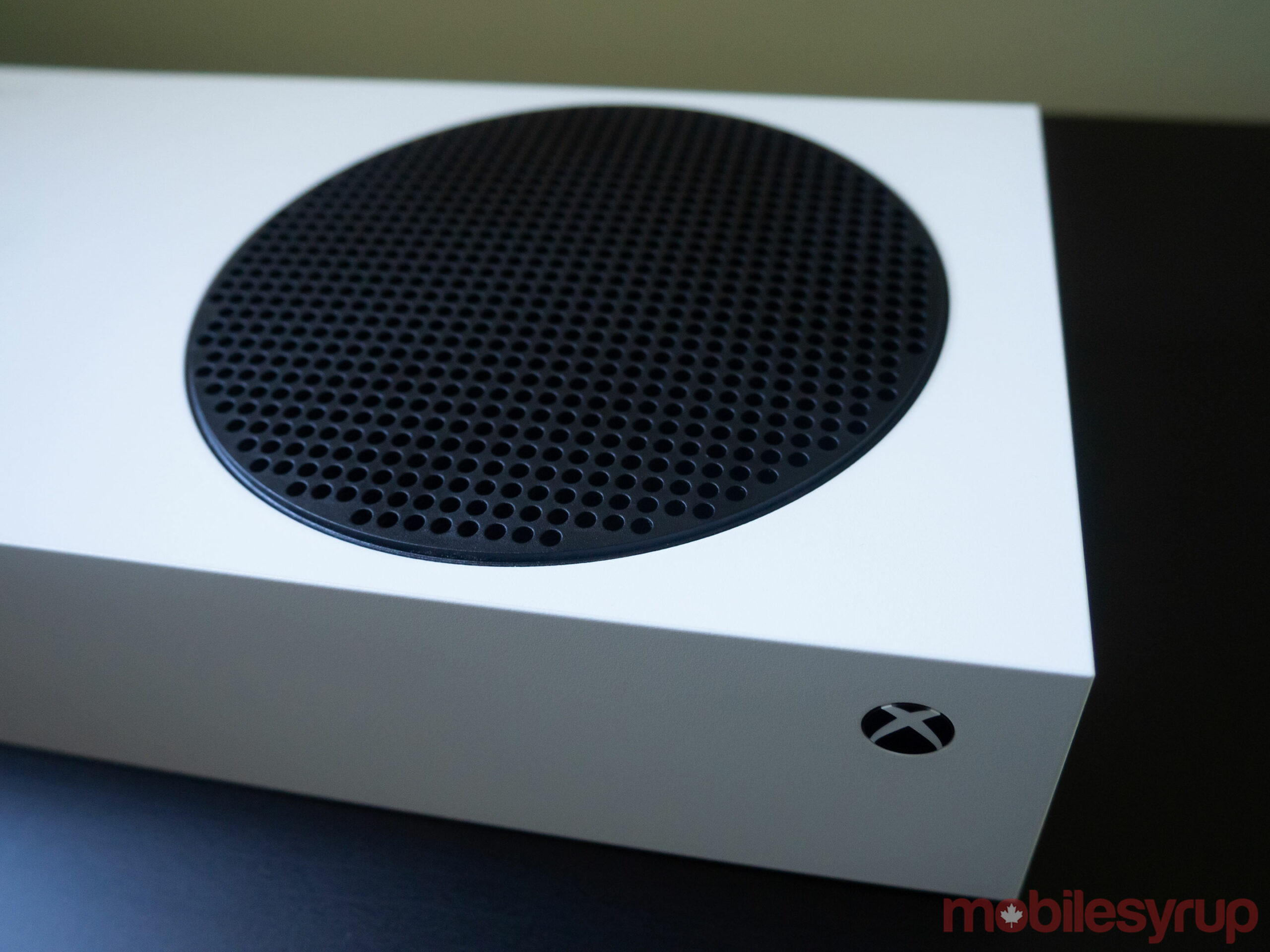
If you’re wondering why I’ve primarily only been mentioning improvements to Xbox One games so far, that’s because, to put it simply, the Xbox Series X/S have little in the way of true next-gen games at the moment, especially on the first-party front. Halo Infinite‘s delay from the Series X and S’ launch to 2021 means the consoles have no marquee title on day one, and there are only a handful of other new titles to make up for it. These include Gears Tactics (more on that below), Assassin’s Creed Valhalla, Watch Dogs: Legion and Yakuza: Like a Dragon — all of which are available on current-gen hardware.
Instead, Xbox is primarily selling the Series S’ games catalogue on the merits of its extensive backwards compatibility features: the ability to play all Xbox One games (besides those that require Kinect), as well as the current-gen console’s solid lineup of 360 and original Xbox titles. Altogether, this accounts for thousands of games in total spanning three generations. Moreover, the aforementioned Velocity Architecture results in these older games also receiving a welcome reduction in load times and even improved frame rates — no additional work from the developers required.
“Velocity Architecture results in these older games also receiving a welcome reduction in load times and even improved frame rates…”
Being able to go onto the Xbox’s digital marketplace and access all of my existing games (and game saves via the cloud) — as well as buy new ones like classic original Xbox RPG Star Wars: Knights of the Old Republic — is incredibly convenient. Many games even support free upgrades from current-gen to Series X/S, like Watch Dogs: Legion, Assassin’s Creed Valhalla, Cyberpunk 2077, Madden NFL 21 and more.
Meanwhile, supported across all of these titles is the Series X and S’ Quick Resume feature. This allows you to have several games open in the background at any given time, so you can swap to them at will nearly instantly. I have a friend who’s perennially late to our group’s weekly Call of Duty: Warzone nights, so it’s incredibly convenient to switch to another game like Tony Hawk’s Pro Skater 1+2 to kill some time. When he finally shows up, all I have to do is re-open Warzone, and the Series S will have the game ready at the main menu almost immediately. Impressively, Quick Resume even remains active should the Series S be disconnected from a power source. Throughout all of this, you’ll be using the solid new Xbox UI, which was introduced last month and is shared between current and next-gen consoles.
At the heart of all these games and features is Microsoft’s undeniably phenomenal Game Pass service, which offers a catalogue of more than 100 games. The service costs an affordable $11.99/month on both console and PC, while the $16.99/month ‘Ultimate’ tier includes all of that plus Xbox Live Gold (required for online play) and ‘xCloud’ mobile streaming (currently only Android). On Series X/S launch day, Game Pass Ultimate will also add EA Play — Electronic Arts’ all-in-one subscription service that includes 60-plus games and other perks — at no additional cost. Having all of that available on launch day definitely helps bolster the Series S’ games catalogue.
For now, though, the games at launch are still solid enough. The most notable of these is Gears Tactics, the long-running third-person shooter franchise’s first-ever take on the strategy genre. Overall, I was impressed at how seamlessly the series’ visceral combat translates to a tactical turn-based experience, while the controls work well on a controller.
The game also runs at 1080p/60fps on Series S, which, coupled with a clever third-person camera when your units are attacking, really captures the main games’ tight shooting mechanics. It’s important to stress that Tactics isn’t a strictly new release, though; it came out on PC in April, with November 10th marking its debut on Xbox consoles. That said, it is available on Game Pass, like Xbox’s other first-party titles.
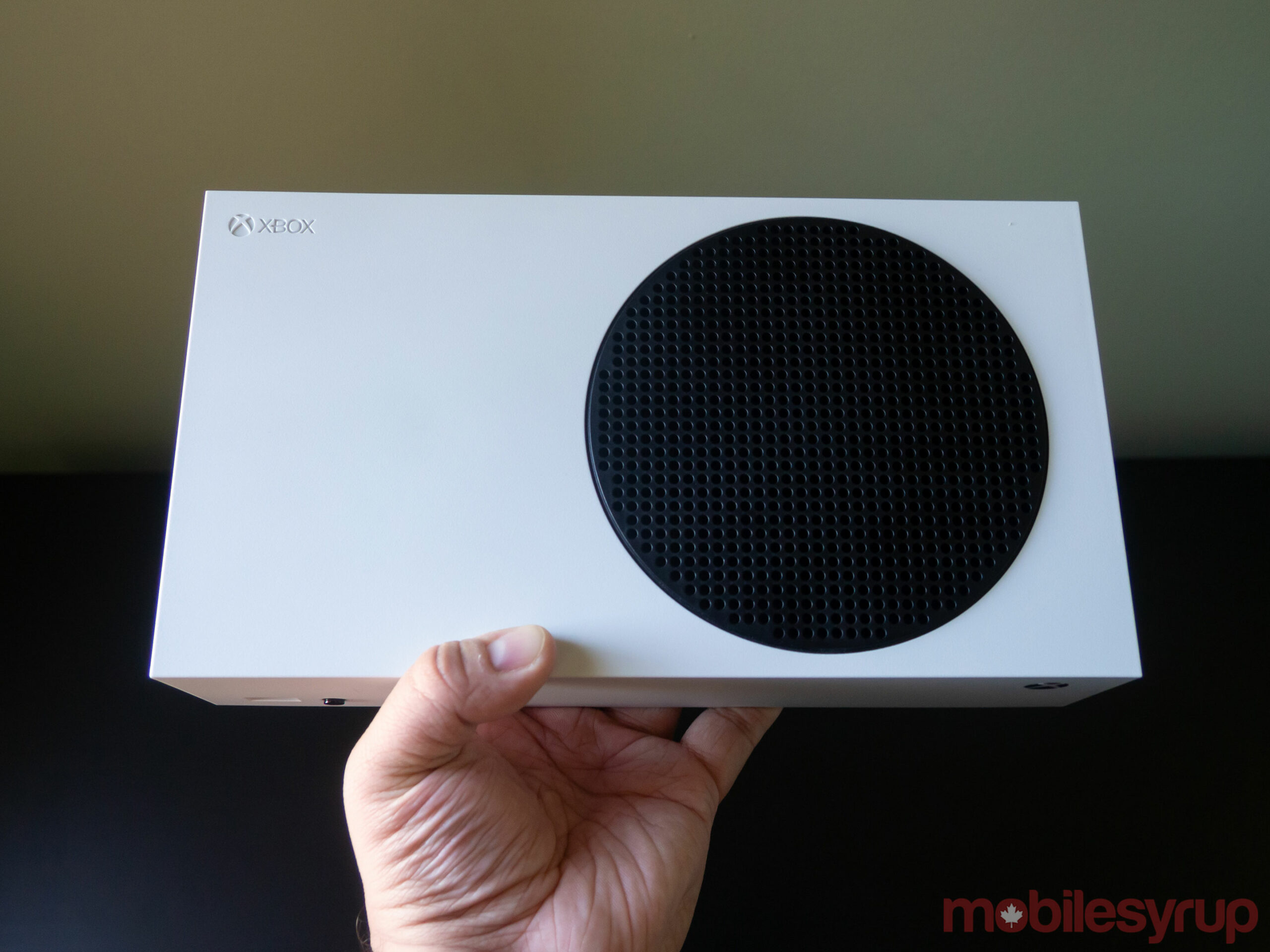
There are also some new indie games coming at or near launch, such as flight combat sim The Falconeer (November 10th), psychological horror game The Medium (December 10th) and adventure mystery title 12 Minutes (TBA 2020). While not system sellers by any means, they do all seem like unique and noteworthy experiences. The Falconeer and The Medium will also both feature Series S optimization, although I haven’t yet been able to test either.
That last point does, unfortunately, speak to a larger constraint to the whole review process. Altogether, there are several titles that haven’t yet been optimized during this time — but will be either at or within one week of launch — including Assassin’s Creed Valhalla, Ori and the Will of the Wisps, Halo: The Master Chief Collection and more. In general, there are many other upcoming titles set to receive optimizations down the line, such as Resident Evil Village (TBA 2021), Halo Infinite (TBA 2021), Marvel’s Avengers (game is out now, but next-gen update is TBA 2021) and Senua’s Saga: Hellblade II (no release date).
It’s good to know that there is a solid amount of publisher support for optimization on the way, even if we don’t yet know what form this will take for every listed game. I’m especially eager to see how expansive open-world titles are optimized for the hardware, such as Assassin’s Creed Valhalla and CD Projekt Red’s Cyberpunk 2077. It’s easy to imagine how much the next-gen tech could benefit these types of games, specifically.
It’s important to note, though, that only a few Series S games will support 120fps at launch (and, likely, even in the months to come), like DiRT 5, Devil May Cry 5 Special Edition, Gears 5 (Versus multiplayer only), The Falconeer and Ori and the Will of the Wisps. Consequently, there’s no real reason now to go out and buy a 120Hz display specifically for the higher frame rate. Of these supported games, the only one I was able to try with the enhanced frame rate was Gears 5. All told, it definitely feels quite fluid, although I don’t find the difference as noticeable as the jump between 30 and 60fps (which the game supports on Xbox One X).
Ultimately, the Series S’ catalogue definitely doesn’t currently offer much in the way of new games, but it certainly promises to have many more to come. Notably, as Game Pass continues to boast great third-party titles like The Witcher 3: Wild Hunt, Nier Automata, Doom Eternal and Yakuza 0, it will also offer day-one access to all Xbox first-party titles. This means that on top of existing Xbox exclusives like Halo: The Master Chief Collection, Gears 5 and Forza Horizon 4, Game Pass will include such future titles as Halo Infinite, the untitled next Fable and new Rare property Everwild. Further, Microsoft’s acquisition of ZeniMax Media guarantees that all Bethesda-published games — including big upcoming titles like Elder Scrolls VI and the mysterious Starfield — will come to Game Pass on day one as well.
It remains unclear whether these will become full Xbox exclusives or release on other platforms like Microsoft’s Minecraft, but regardless, knowing all these games are coming to Game Pass makes the Series S’ value proposition even stronger. Of course, all of that is a roundabout way of saying you’re buying into the promise of new games with the Series S. While that doesn’t help you now, it’s still a supremely propitious outlook for the future of the Xbox brand.
Cutting costs here, spending more there
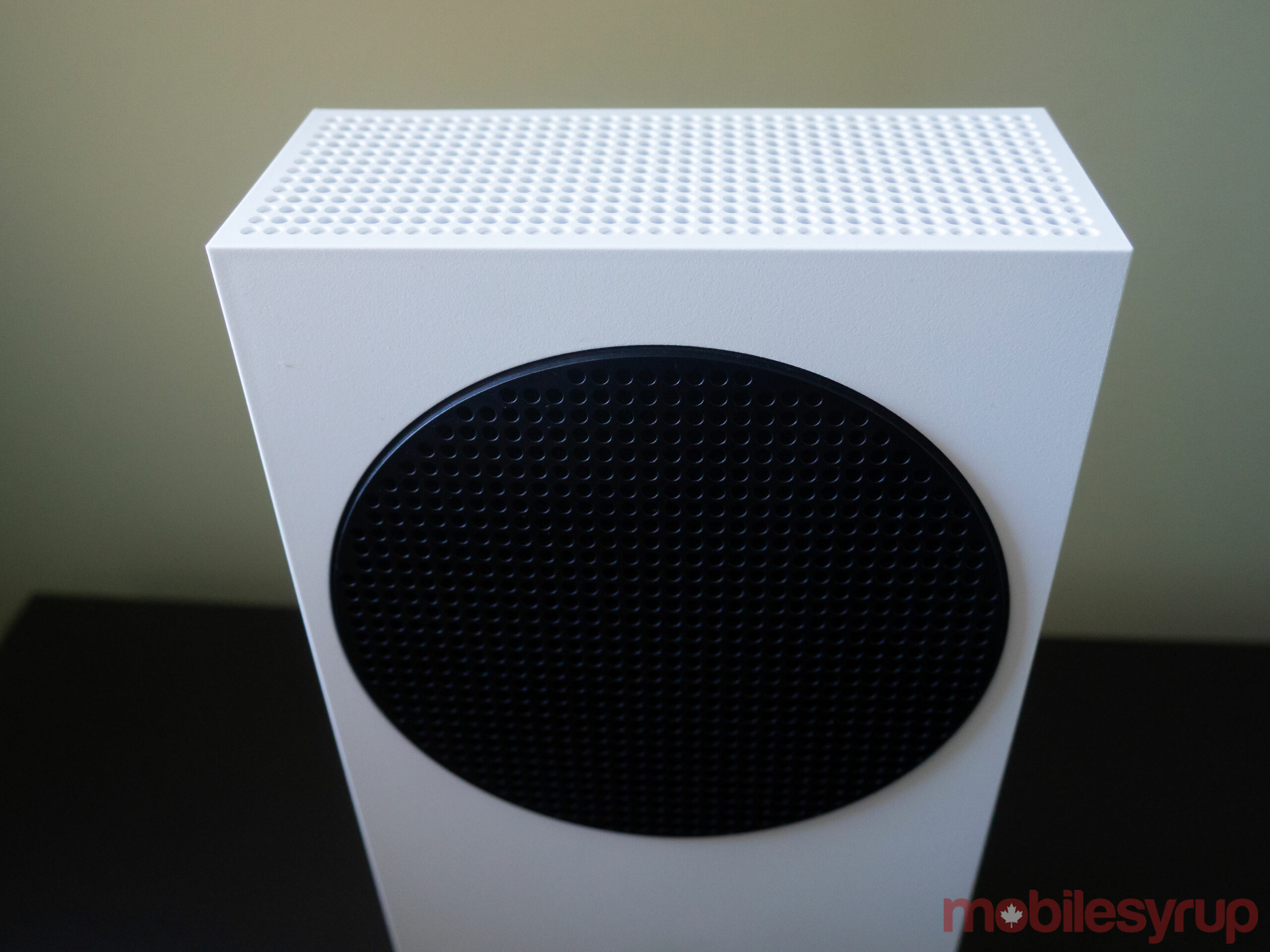
While Game Pass reduces the standard $79.99 price tag for most games — or, in some next-gen cases, $89.99 — it should be noted that there are other costs to consider. Most notably, the Xbox Series S uses a frustratingly proprietary and expensive Storage Expansion Card, with Seagate being the only manufacturer of the device at the moment.
These do plug into the console’s rear like old-school PlayStation console memory cards, which is definitely convenient. But that’s about the only good thing about them right now. Unfortunately, you’re almost certainly going to need one of these cards eventually, since the Series S’ 512GB of internal memory only leaves about 364GB to actually store data.
“The Xbox Series S uses a frustratingly proprietary and expensive Storage Expansion Card…”
Problematically, these Seagate cards cost $300 CAD, which — while in line with what that technology costs — is still extremely pricey, especially considering the Series S itself is only $80 more. In time, these cards should go down in price, but it’s unclear when that will happen. By contrast, Sony’s PS5 is compatible with NVME SSDs from a variety of manufacturers (specific ones not yet confirmed) which will end up being cheaper.
You do have the option to run previous-gen games off of a standard hard drive to use that storage space instead of your console’s, but you won’t be able to take advantage of the next-gen benefits like faster load times. This is a pretty poor trade-off, all things considered. On top of that, next-gen games must be installed on the Series S itself or the Seagate Expansion Card.
This also inadvertently hurts Game Pass subscribers a bit, in that all of the service’s games must be downloaded in order to be played. Phil Spencer has said the company plans to eventually bring xCloud streaming to consoles — which would help alleviate these storage issues — but for now, there aren’t really any viable long-term cost-saving solutions.
On the other hand, Microsoft recently launched its novel ‘All Access’ program in Canada. Available exclusively at EB Games, All Access allows you to make monthly payments on a Series S or X over a 24-month period. With the Series S, this starts at $29.99/month (versus $39.99/month for the Series X) and it even includes 24 months of Xbox Game Pass Ultimate. Effectively, you can get everything you need for next-gen gaming — all for one monthly fee.
It’s a wonderful option to give consumers, especially during the ongoing COVID-19 pandemic when they’re likely more cash-strapped. Of course, you can’t finance the $300 card itself, but in any case, that otherwise steep price might become more palatable when the console’s cost can be split into monthly payments.
Who is the Series S really for?
To put it bluntly, the Series S is absolutely not the console you want if you're all about high fidelity gaming experiences. After all, the console's resolution cap of 1440p ensures that you'll only get visuals that are mostly on par with the current Xbox One S. Further, a general dearth of true next-gen games at launch and initially pricey expansion cards mean that the Series S isn't exactly a day-one must-buy.
That said, the brilliant part of Microsoft’s current gaming strategy is that it’s entirely centred around choice. The current Xbox One hardware exists and will continue to be supported for a couple of years, should you still own one. If you want to upgrade to a true 4K-capable device, the Series X and PC are also there for you. Android devices can now even play more than 100 console games via xCloud streaming.
All of that notwithstanding, the Series S is still easy to recommend for several reasons, even at launch. For the many casual gamers who only play a few popular titles at most -- namely, the likes of Call of Duty, Minecraft, FIFA and/or Fortnite -- and, presumably, still have a standard HD TV, the Series S is pretty much an ideal console. Existing Xbox One and/or PS4 owners should also keep the Series S in mind, as the extensive backwards compatible catalogue alongside the excellent package that is Game Pass provides you with a staggering amount of games, with next-gen benefits like Quick Resume, reduced load times and/or improved frame rates.
In fact, the Series S even has appeal as a secondary system. Those who currently own a Nintendo Switch or are looking to buy a PS5 can still get a lot out of the Series S should they want to play any games that are only playable on the Xbox consoles -- especially backwards compatible titles that may not emulate well (or even at all) on PC -- or simply have a dedicated Game Pass device.
No matter how you slice it, the Series S offers stellar value in terms of features, games catalogue and price, and it's easy to recommend to almost anyone.
The Xbox Series S is available on November 10th for $379
"No matter how you slice it, the Series S offers a stellar value in terms of features, games catalogue and price, and it's easy to recommend to almost anyone"
MobileSyrup may earn a commission from purchases made via our links, which helps fund the journalism we provide free on our website. These links do not influence our editorial content. Support us here.


